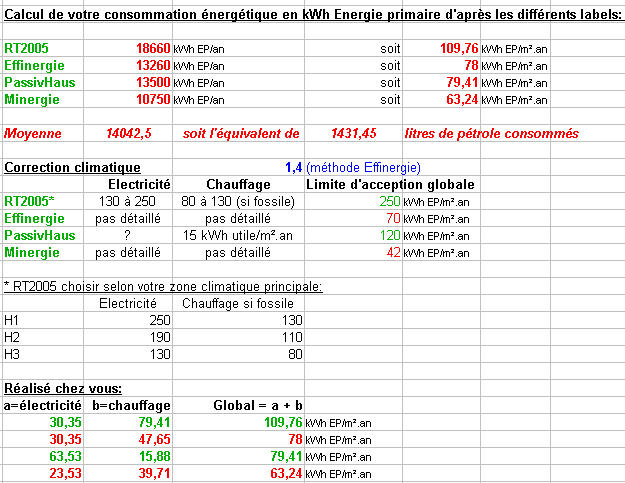I also discover this value of 120 kWh / m² / year.
In computational software, I saw an allusion to PHPP that I mentioned recently. I would like to try it on my house ...
From memory, with the values of my consos, it would be necessary that my conso of gas decreases of 40% to reach the announced 120kWh. These 10 last years, I consumed about 140 kWh / m² / year in gas for the only post heating and DHW.
My domestic electricity consumption (excluding electric vehicles) is of the order of 35 kWh / m² / year.
In a year, I would have the results of the new boiler and the CESI ... should I then reduce the figures of my photovoltaic production?





